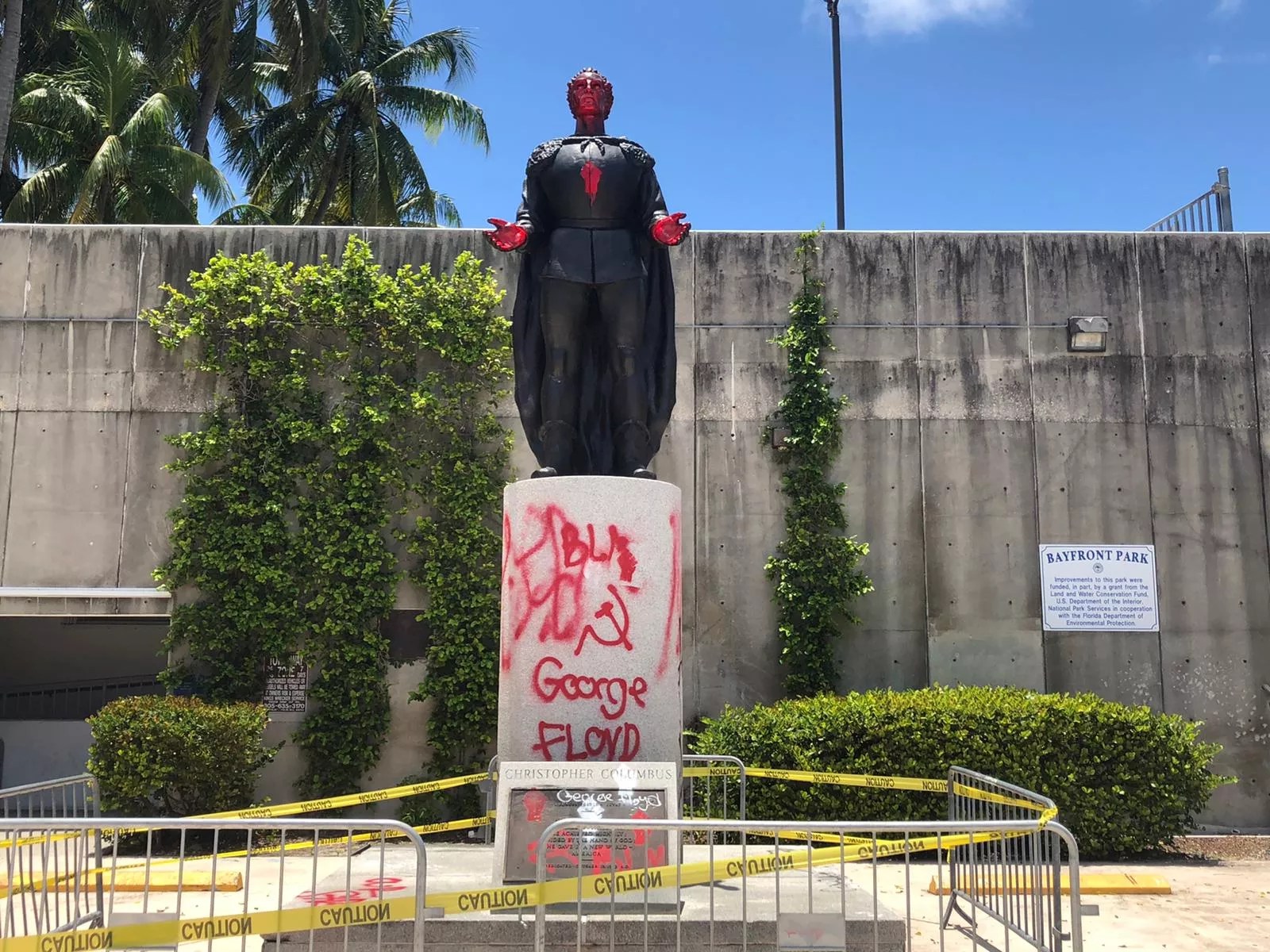
Photo by Joshua Ceballos

Audio By Carbonatix
The Christopher Columbus statue in Bayfront Park is still standing, clean and on a high pedestal, after protesters spray-painted the monument in June and some activists called for its removal.
In the midst of demonstrations for racial justice after the death of George Floyd over the summer, some protesters spray-painted the statue of Columbus and wrote “George Floyd” on its concrete perch. Later that week, after seeing pictures of the statue and videos of police tackling protesters, Gramps tavern owner Adam Gersten offered $5,000 to the City of Miami to remove the statue.
The statue was cleaned off and kept in place, although a metal fence around it has remained up since June. In response to the Columbus statue controversy, City of Miami commissioners on July 9 unanimously passed a resolution that created a “zero tolerance” policy for vandalism, allowing for perpetrators to be cited, arrested, and fined.

The Columbus statue was vandalized in June.
Photo courtesy of Adriana Duprat
Will you step up to support New Times this year?
At New Times, we’re small and scrappy — and we make the most of every dollar from our supporters. Right now, we’re $16,750 away from reaching our December 31 goal of $30,000. If you’ve ever learned something new, stayed informed, or felt more connected because of New Times, now’s the time to give back.
Gersten tells New Times he initially made the offer in order to shift the conversation from Columbus himself to a wider questioning of how the community looks at history. Columbus statues around the U.S. were taken down by protesters this summer, and discussions of replacing Columbus Day with Indigenous People’s Day have been going on for years, as many have come to grips with the truth that Columbus enslaved native people and wiped out native populations with disease. Rather than celebrate the problematic Columbus, the rebranding of Indigenous People’s Day aims to lift up indigenous cultures.
Gersten says he got calls from friends who didn’t understand that history after New Times published a story about his $5,000 offer.
“There are people close to me who didn’t understand these points of view, and they ask, ‘Why Columbus?'” Gersten says. “I’ve had those conversations with them more often to help them understand why people are so passionate about those things.”
Not every conversation has been easy.
A week after the New Times article appeared, someone spray-painted the wall of Gramps with a message that said, “IF COLUMBUS GOES, YOU GO.” Gersten says he had several people call him angrily about his offer to help remove the statue – though the city never called him at all.
Still, he says more attention is being paid to issues of racial justice and problematic histories, which has given him the opportunity to sit down with people and find mutual understanding.
“It’s important to compassionately understand why people get so upset and triggered by alternative points of view…. Coming together with your neighbors and talking can bear fruit. It gives me a tiny bit of hope,” he says.